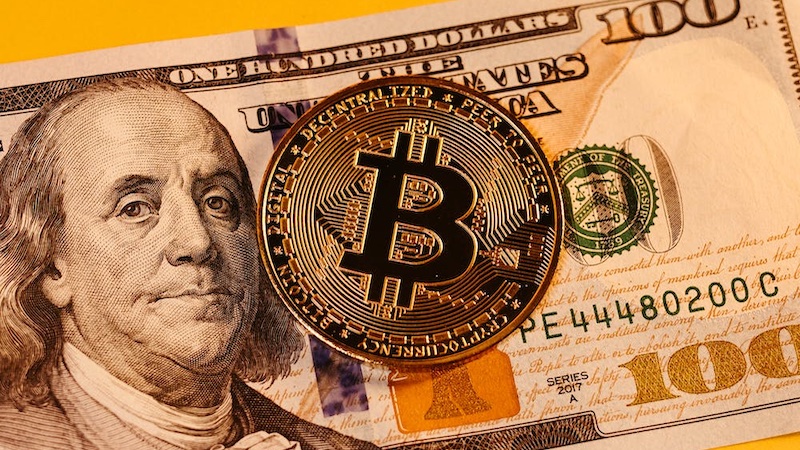By Derek Pew
At the highest levels of the US government, there exists a significant concern and lack of understanding regarding cryptocurrency, posing a notable threat to national security.
The inception of the Bitcoin protocol in 2008, along with the subsequent emergence of various blockchain-based protocols and payment channel networks (PCNs), has revolutionized global peer-to-peer wealth storage and transfer. Coupled with the rapid advancements in artificial intelligence capable of innovating solutions within PCNs, the landscape of the global monetary system stands on the brink of a significant transformation.
Despite these advancements, politicians from both political spectrums and a substantial portion of the national security establishment remain oblivious to the workings of digital currencies. This lack of comprehension has led to hesitancy in adopting proactive measures to safeguard the US dollar’s status as the predominant global currency amidst the evolving technological landscape.
The prevailing reluctance to explore the development of a US Central Bank Digital Currency, coupled with legislative efforts hindering the exploration of its feasibility, stem from misconceptions surrounding the functionality of digital currencies. There are concerns about potential infringements on privacy rights and the government’s control over individuals’ purchasing power. This apprehensive stance implies a belief that the US government possesses the unilateral ability to impede global technological progress and maintain the pre-digital international monetary status quo indefinitely.
Such actions are short-sighted and could jeopardize the US Dollar’s position within the global financial framework. Since World War II, the demand for a stable currency, predominantly the US dollar, has been a crucial element of US national power. This demand, with approximately 80% of transactions denominated in dollars, contributes to the dollar’s stability. This stability has translated into lower inflation rates, reduced interest rates for US entities and consumers, and enabled the US to sustain fiscal and trade deficits without adverse repercussions. Moreover, the US leverages its position as the primary currency for global economic activities, accruing transaction fees, gathering data on global trade, and utilizing access to US Dollar denominated accounts as a tool for influence.
While the focus within the US national security establishment often revolves around the potential displacement of the dollar by other national currencies like the Chinese Yuan (renminbi), scant attention is directed towards devising new mechanisms to facilitate trade, investment, and wealth storage in US Dollars amidst the digital currency and PCN evolution. While democratized cryptocurrencies such as Bitcoin are frequently perceived as threats, entrepreneurs are exploring avenues to leverage these technologies for wealth storage and transfer. One notable development is the introduction of stablecoins, digital currencies pegged to external references to maintain stable values.
Presently, companies, both domestic and international, are spearheading the creation of US Dollar-secured wealth storage and transfer mechanisms using cryptocurrencies. For instance, iFinex, a Hong Kong-based firm, has introduced stablecoins linked to major world currencies, including the US Dollar Tether (USDT) pegged on a 1:1 basis with the US dollar. USDT serves as a dollar-secure wealth storage and transfer solution, enabling transactions for goods and services in a stablecoin format accepted for its defined value. Furthermore, USDT acts as an intermediary for converting other cryptocurrencies to avoid price fluctuations, with nearly half of Bitcoin trades now linked to USDT. In 2022, iFinex reported processing approximately $18.2 trillion in transactions through USDT, signifying its growing acceptance as a dollar substitute.
However, several challenges accompany the utilization of stablecoins like USDT. Firstly, non-US entities like iFinex, rather than the US Treasury, dictate the regulations governing digital currencies tied to the US Dollar. Secondly, these transactions operate beyond the purview of the US financial system, offering a loophole to circumvent US sanctions. Thirdly, as US Dollars and equivalents remain static while stablecoins circulate, the visibility of US currency movements outside the US diminishes. Additionally, the reliance on third-party stablecoins introduces corporate risks that could undermine global confidence in US Dollars. The potential detachment of stablecoin values from the US Dollar poses a long-term threat.
The current landscape presents an opportunity for the US to embrace these evolving protocols and PCNs while the US Dollar retains its global store of value status. Failure to seize this opportunity could result in relinquishing control to external entities, potentially leading to irreversible consequences for the United States.
The utilization of stablecoins like Tether underscores the advantage foreign companies derive from the dominance of the US Dollar and technological advancements, highlighting the need for the US to proactively engage with these financial innovations. Disregarding cryptocurrencies and stablecoins could jeopardize the global dominance of the US Dollar.
(Note: The author, Derek Pew, shares insights based on his experience in the cryptocurrency field, emphasizing the necessity for informed discussions on financial technologies and their implications for US policy. The views expressed are personal and do not necessarily reflect those of the Foreign Policy Research Institute, an organization dedicated to producing well-argued, policy-oriented articles on American foreign policy and national security priorities.)
About the author: Derek Pew serves as the chairman and CEO of The Yard and Executive Chairman of HashWatt.
Source: This article was originally published by the Foreign Policy Research Institute (FPRI).

